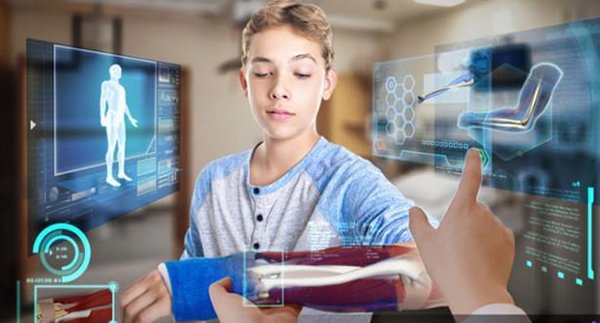Whether it is virtual reality (VR) or augmented reality (AR), this year is a magical year. Technical players mostly agree that the potential of this technology far exceeds that of any industry or application. The core of technology is data, especially the innovative and immersive display of data. As one of the world's largest collectors and custodians of big data, who can benefit more from the U.S. government?

For those who are not familiar with technology, VR is a channel for users to immerse themselves in the digital world, and AR is to supplement the digital world with the real world. The external attention that these capabilities acquire is rapidly rising. The spring of 2016 saw the launch of two major VR hardware - the HTC Vive and the crowdfunded Oculus Rift. But nothing beats the sensation caused by the AR mobile game "Pokémon Go" (Pokemon Go) which was launched in July.
How do these technological advances provide opportunities for the government? More and more organizations are applying analytical techniques to their data collection to gain stronger insights. Analytical functions, such as real-time streaming processing, visual analysis and text mining, ensure that the government takes action on the premise of mastering continuously updated knowledge.
The government has used these analyses to prevent welfare and medical fraud, assess employee development trends, organize defense supply chains, and sort out the terror threats of social media. But in the known areas, VR and AR can go deeper and further.
By viewing the information generated by the visual analysis program through VR, AR hardware and software, the government can quickly map the data to the virtual environment.
For example, users of defense and intelligence space can supplement ground-based GPS tracking data at any time and display troops on the ground in near real-time. Commanders can use this to immediately familiarize themselves with the troops. Not only is the military mobilized, even the type of terrain the army is passing through, the route ahead, and other information that can only be obtained from a bird's-eye view, he is crystal clear. This type of field information is equally important for Homeland Security coordination of disaster response. They are able to judge the extent of the disaster and give priority to the areas that are most affected and most in need of assistance.
On the civil side, analytical VR can provide information support for decision-making, saving millions of dollars each year. By using a combination of VR and data analysis, healthcare organizations can improve access to telemedicine for better results. Imagine that if VR replaces telephone or video calling telemedicine consultations, in a virtual reality environment, doctors can “see†the patient and “contact†the patient. At the same time, the health data of relevant groups or individuals can also be covered for display so that doctors can treat them.
Using VR or AR techniques to analyze known data can also help reduce the cost of a census every ten years. It greatly limits the number of individual canvassing votes. Combined census data and geospatial data can optimize the census route. Enumerators can save time and effort and reach the households they need to contact.
Like the creativity of the institutions that are using them, the application of analytical VR or AR is infinitely broad. Institutions should start thinking about where this emerging technology can help them see their mission in a new light. The combination of data analysis and AR/VR will enable them to respond to new and existing challenges in a more sensible and effective manner, ultimately achieving the goal of saving money, time, and even lives. This is probably the coolest of all the realities inside.
